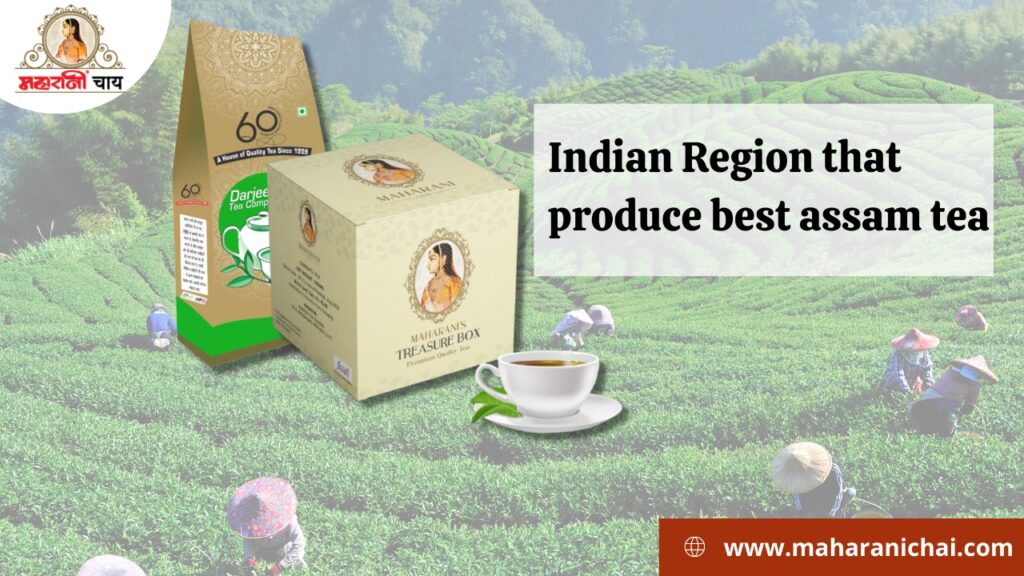Assam Tea Estate/Garden: India is the world\’s second-largest producer of best Assam tea, behind China. During the British colonial era, tea plantations were first established in our nation. With time, India began producing a variety of teas on its own, including Assam, Darjeeling, Kangra, Nilgiri, Kashmiri Kahva, etc. And among all of them, Best Assam tea\’s flavour and scent have allowed it to maintain its appeal until today. With the times, this tea is enjoyed not only nationally but even internationally. Here is all the information you need to know about Assam\’s tea gardens.
List of Popular Tea Gardens in Assam: Assam\’s Tea Gardens are well-known both domestically and abroad. Indeed, visitors come to the gardens from all over the world. In Assam, you may see expansive tea estates that are covered in green, which is a visual pleasure. There are about 800 tea estates in Assam. The names of the Best Assam Tea in Uttarakhand estates are as follows:
A list of Assam\’s Tea Estates:
| Gardens Location | Total Number of Tea Estate |
| Karimganj | 23 |
| Dima Hasao | 2 |
| Cachar | 56 |
| Dhemaji | 2 |
| Lakhimpur | 9 |
| Sonitpur | 59 |
| Nagaon | 21 |
| Kamrup (Rural) | 3 |
| Chirang | 1 |
| Baksa | 4 |
| Kokrajhar | 3 |
| Udalguri | 24 |
| Goalpara | 2 |
| Bongaigaon | 1 |
| Dhubri | 3 |
| Dibrugarh | 177 |
| Jorhat | 88 |
| Karbi Anglong | 15 |
| Golaghar | 74 |
| Tinsukia | 122 |
| Shivasagar | 85 |
Some of the best Assam tea estates you must visit:
Assam, a state in the eastern Himalayas noted for its biodiversity, historical landmarks, and tea plantations, is situated along the Brahmaputra River. To help you plan your next vacation to this stunning state, we\’ve put together a list of the top tea farms in Assam.
1. Sonapur Tea Estate
Beyond the fantastic splendour of Assamese tea farms, the Sonapur tea estate will transport you to Guwahati, the North\’s capital. The Bhaduri Family has owned this tea estate since it was first established by the British in early 1924. In the early years, this plantation produced Orthodox tea, spreading the robust brew of their premium Assam CTC tea. This Assam CTC tea farm has built a reputation over the years among large businesses like Tata Tea and Levers.
2. Ghograjan Tea Estate
This tea estate was established in the early 1930s when the first seeds were planted alongside the Ghagra River, carrying on the legacy for the fifth generation. This river gave rise to the name \”Ghograjan,\” which in the local dialect means \”little river.\” This 350-acre tea estate has built a reputation for excellence in producing the best Assam CTC tea and the best Orthodox tea in the area.
3. Tea Estate Mangalam
The tea estate purchased the land next to a government reserve forest that is home to a variety of species. The tea estate, which spans an area of 117.99 hectares, is situated across the Towkok river. The tea plantation is a section of the Towkok tea garden, which Jayshree Tea Companies took over in 1955. This year, the tea estate continued to produce high-quality tea, and now they are producing Assam CTC tea and Orthodox tea.
4. Tea Estate Harmutty
One of Assam\’s oldest tea estates, Hiramati is named after the queen and was established in 1870. The tea estate is situated in a charming area of Assam, where the Dikrong river flows beside the garden against a backdrop of the Arunachal Pradesh highlands. The Harmutty tea plantation has been producing high-quality tea leaves for a soothing tea break for years. One of the best Assam tea gardens is there.
5. Corramore Tea Estate
The Corramore tea estate, with a family history spanning more than a century, was established by Scottish immigrant Robert Logan in the 1860s. This historic tea estate is presently held by Williamson Tea and is located in the Hatigarh neighbourhood of the Darrang district of Assam. The tea plantation, which is spread out across 480 hectares of land, specialises in the collection of Camellia assamica species.
As far as the origins of tea in Assam are concerned, they were very inadvertently discovered in the year 1823 by a Scottish explorer by the name of Robert Bruce. He saw that a particular species of plant grew wild in the area, and the locals brewed an aromatic beverage using the leaves of the aforementioned plant. The plant\’s leaves weren\’t sent for scientific analysis until Charles, Robert\’s brother, did so in the 1830s. The plant was identified as a type of tea, distinct from the Chinese variation of Camellia sinensis var. Sinensis, according to a thorough scientific analysis. Camellia Sinensis var. Assamica was the name given to this cultivar.
For more information about Best Assam tea, Best Assam CTC tea and Assam CTC tea visit us at https://maharanichai.com/


We appreciate you this phenomenal article. I especially enjoyed reviewing it and ought to speak about it to everyone.
Glad to see you’re on top of things. You sound like you understand what you’re talking about! Thanks and good luck! x
It’s rare knowledgeable men and women on this topic, however, you appear to be you know what you’re preaching about! Thanks